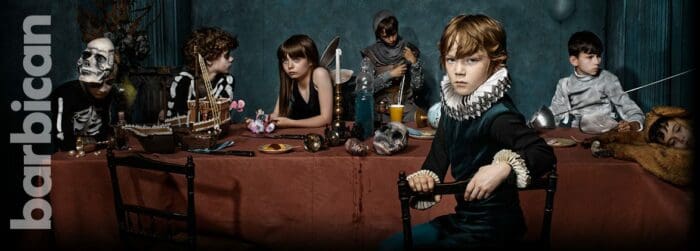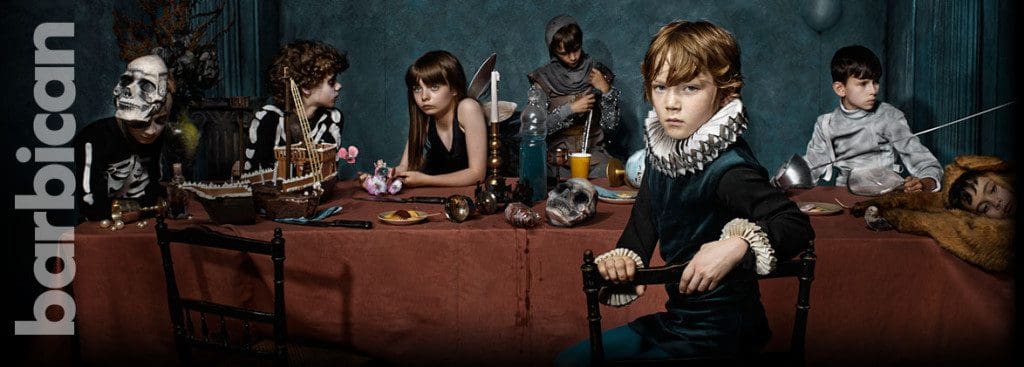‘Now
this overdone, or come tardy off, though it make the
unskilful laugh, cannot but make the judicious grieve; the
censure of the which one must in your allowance
o’erweigh a whole theatre of others.’Act III, Scene II
Shakespeare summarises my feelings towards this latest attempt at Hamlet better than any else could; I respectfully defer to his words. This is incidentally what Lyndsey Turner should have done when she chose to direct a play of utterly mammoth renown. Fear not though: Benedict Cumberbatch is a competent Hamlet, but the whole production is the very thing that the Danish Prince so trenchantly opposes; it is, in its totality, the ‘robustious, Periwig-pated fellow’ which Hamlet declares is the enemy of good drama.
You can blame this mainly on technical grandiloquence. The set, while the most impressive feat of stagecraft I have ever seen, is too large for a play that is usually so subtle in its drama; the music and blocking is too often too loud for a story about a mostly quiet, introspective figure. Thanks to the work of Es Devlin, the set, which is revealed after the opening’s dialogue, is a cross section of an enormous royal hall. It dazzles, which coheres with the civility and pomp that Claudius tries to create. However, while a larger stage gives larger opportunities for blocking, it also creates more wasted opportunity: despite the manifold possibilities, most of the play’s action happens conservatively at centre stage—we only get one extreme downstage moment at the beginning and the stairs which split the stage into two levels are used twice.
The more a piece of tech is used in a play, the less it appears as a gimmick. That is the first truism that this play forgets to remember; the second is that big technical moments should only accompany the biggest dramatic moments: there are so many marvels in this work that we forget that they are marvels: Claudius resolution to murder Hamlet before the play’s interval is accompanied by a storm of confetti being blown out of every stage exit. Why did Turner think this was a good idea? We know what a dark moment this in in the play; the words tell us so. The effect of this moment is that we fail to feel the effect of Claudius words during the interval. The tech swallows the subtlety of the language. The curtain coming down for the interval is a substantial technical moment in itself; there is no need for anything else. This applies to the rest of the production; a small lighting change can be more powerful than an explosion.
The blocking of the court’s servants, who effectively act as stage hands, is similarly too much. In nearly every scene we see them come on and take off a superfluous prop; they are a symptom of a technical overabundance and their presence distracts rather than enhances. The production’s best moments only feature a maximum of three actors on stage—anymore than that and it lacks coherence—not in a meaningfully mad way, but in a distastefully messy way. I would compare it to the more seamlessly blocked movements of Turner’s last work, Light Shining in Buckinghamshire.
With technical work comes the music, which too frequently gives the performance the appearance of a midbrow BBC drama. The more atmospheric sound is good: it adds to the growing chthonic instability within the Prince; the musical interludes, on the other hand, detract from the piece: they sound like ringtones rather manifestations of madness.
The stagecraft is not completely a waste, however. The play’s second half (its chosen cleft being Act IV, Scene IV) shows that its stagecraft can impress while also contribute to the atmosphere. The more muted scenes which feature the previous castle’s hall inundated with earth and bones work effectively. Turner lets the words be her guide and, save for an unbearable dance sequence as Hamlet gouges Laertes, it works. The one aspect apart from the tech which taints the latter scenes of the production is the play’s initial neglect of character.
Turner makes most every character who is not Hamlet a dull presence: Horatio, in conspicuous hipster garb (he actually wears blocky glasses and a flannel shirt) feels like like more a mannequin that a best friend. He merely exists on the stage. While I understand that Turner is probably going for the interpretation of Horatio as the horrified detached observer—the audience member—this is lost among the chaos of the tech; like an adjunct, Ophelia’s character fails as she often does in poor productions by being interminably one-note—a single transformation from amorous to crazy; Gertrude is a phone-in; despite his wonderfully insidious Claudius, Ciarán Hinds’ character seems to have no effect Hamlet.
To be honest, this death of character could have been passable: Hamlet, in a certain sense, might as well be on his own for the entire play, the inverted man that he is. However, it is hard to feel pity for Cumberbatch’s Prince. He is too self-assured to be a second-guesser. He is almost suave in his delivery, the kind of inhuman confidence of a ‘town-crier’ which he supposedly opposes. Turner has him perform out too quickly. He explodes in his first soliloquy and so the edifice of the audience’s empathy is never built (it does not help that the cast is made to move obnoxiously in slow motion while he delivers it). It is not until the play’s second half that we see Hamlet as sympathetic man. He is best in the graveyard scene and brings the requisite morbid curiosity to his encounter with the Digger. The reason he acts so well in this scene is because Turner stops trying so hard. This is not so for the play’s first half. Cumberbatch is directed to given a lot of inane direction: he parades around as a drummer boy, hides in a toy castle and acts like a child in front of Polonius. His antic disposition has no ambiguity to it, and worse of all his Act III opening monologue has him pull a belt around his head like a noose: we have no choice but to believe he is definitely talking about killing himself. This is all such an irritation because Cumberbatch has the skill to be a Hamlet, it is just that the nonsense around him restricts his ability to portray a genuine human.
In conclusion, I am let down by Turner’s efforts. Attacking the mammoth of Hamlet with an angle is fine, I believe, but attacking the mammoth with a million different angles will kill it and it is the reason why creatures like it tend to die out.


